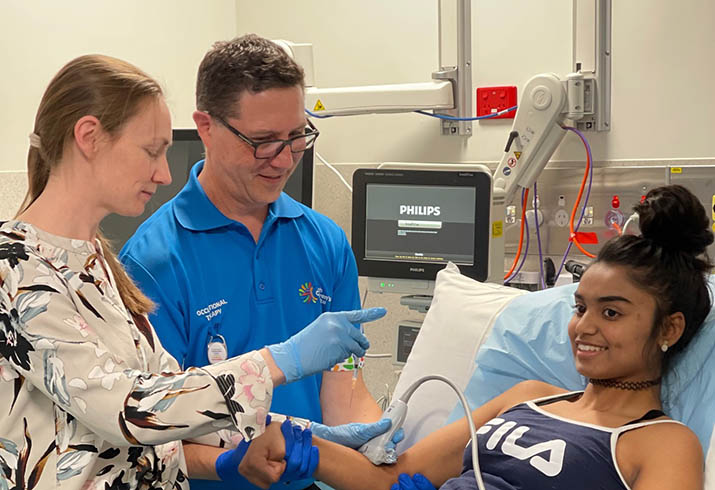Cerebral palsy children and young people take big strides thanks to landmark ‘Botox’ study

A Perth Children’s Hospital researcher has demonstrated the long-term safety and benefit of Botulinum toxin type-A (or “Botox”), as one important element to treat the growing muscles of children and young people with cerebral palsy (CP).
Paediatrician Dr Jane Valentine, Head of Research, Kids Rehab WA at Perth Children’s Hospital (PCH) and Professor of Paediatrics at The University of Western Australia’s Medical School has tracked the progress of all children with cerebral palsy who have been treated with Botox in WA over the past 25 years as part of her ground-breaking study.
Dr Valentine’s work has paved the way for the use of Botox as part of mainstream care to improve function, support and treat pain for cerebral palsy patients since 1995 when Princess Margaret Hospital became one of the first paediatric hospitals internationally to incorporate Botox into the management of CP patients.
Dr Valentine said Botox treatment has been life changing for many children with CP because it led to improved functional skills enabling them to be more active and participate in a greater range of activities.
"Prior to the use of Botox, younger children with CP faced additional complications with growth due to their increased muscle tone often resulting in multiple surgeries.
"Our long-term data has demonstrated multiple benefits for our patients as they grew due to more relaxed muscle tone, less pain, improved motor function," Dr Valentine said.
Dr Valentine’s work has captured comprehensive statewide data on where, when and how treatment with Botox injections has impacted on each child’s growth and development.
"The findings are incredibly significant for providing long-term evidence about the safety of this treatment because of the unique research data we have access to in WA." Dr Valentine said.
Fifteen year old Falak Zaman has received Botox injections in her right arm for close to ten years through the ‘amazing team’ at Perth Children’s Hospital as part of her cerebral palsy treatment.
Her Mum Tanzia said the Botox has been enormously helpful with Falak’s muscle control as well as reducing pain and stiffness.
"It’s really helped improve Falak’s life and helped her gain more independence as she’s grown older," Mrs Zaman said.
Dr Valentine acknowledged the enormous contribution of consumers, participants and families as well as the amazing clinical team at PCH for their support and guidance throughout her research.
“"Our work will not only help other clinicians understand the best way to support the development of children with CP but it gives families confidence about the benefits of Botox treatment as part of a long term and comprehensive treatment plan for their children," Dr Valentine said.
Image | Falak receives Botox treatment at PCH

